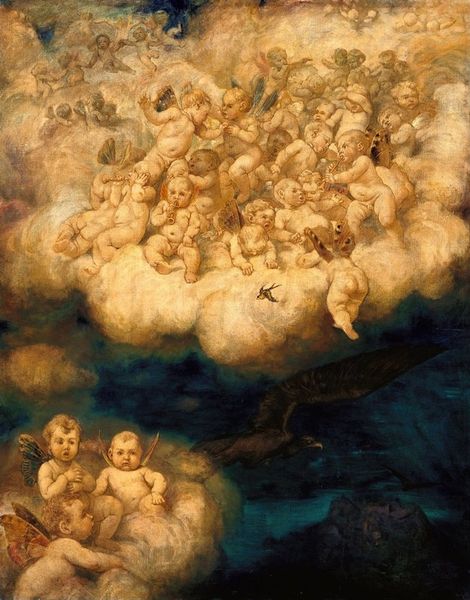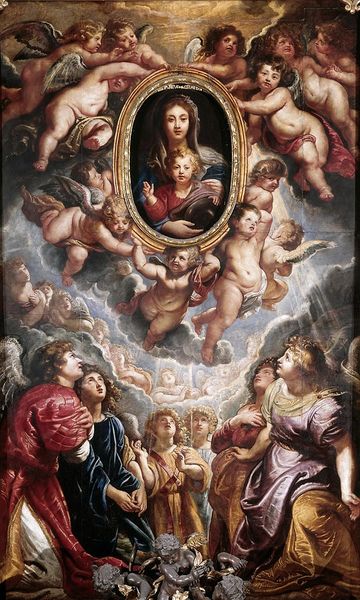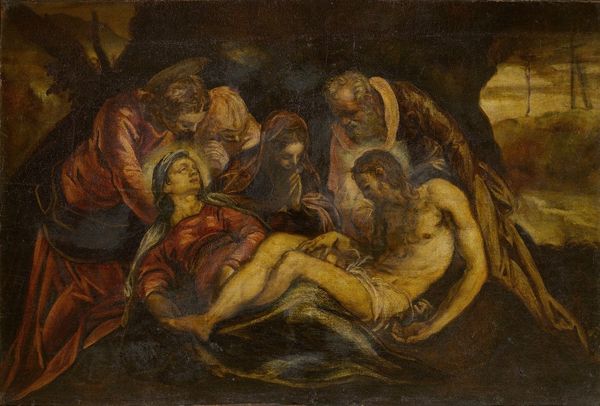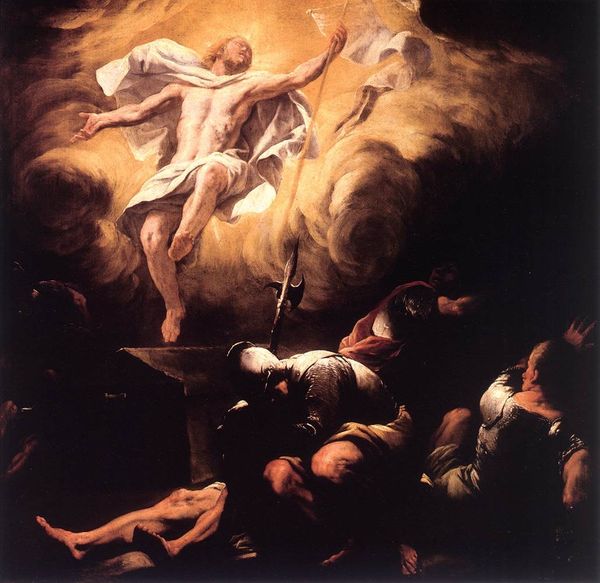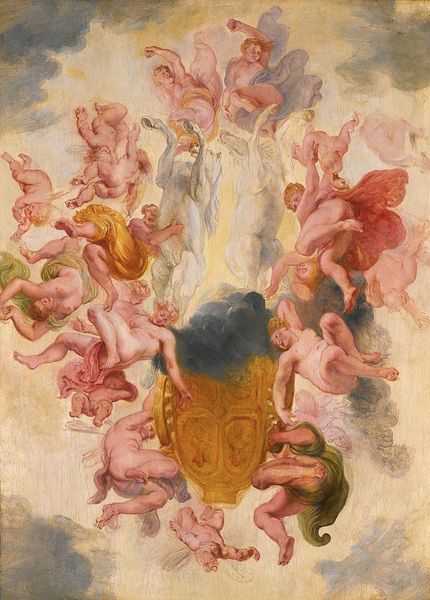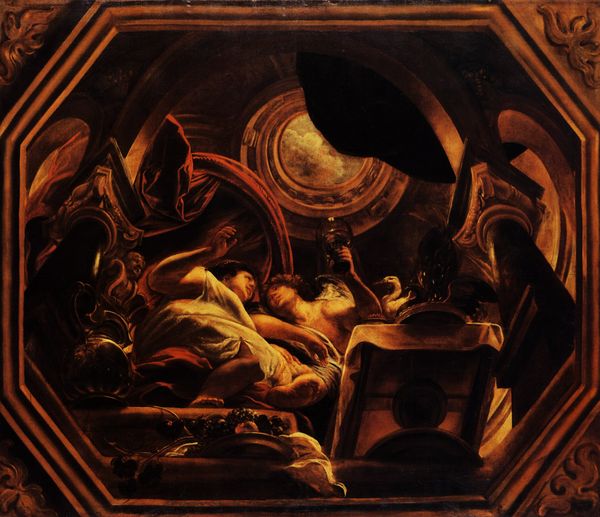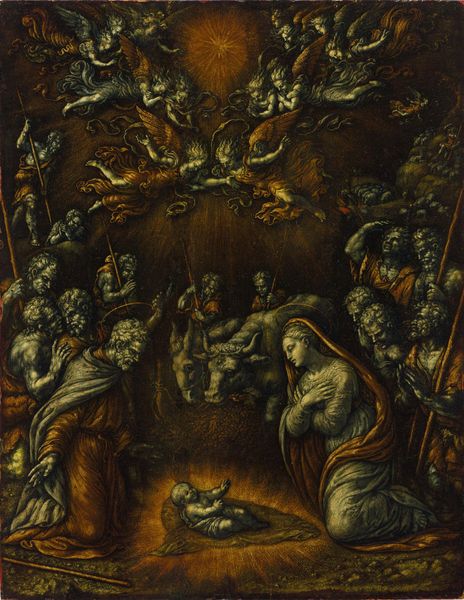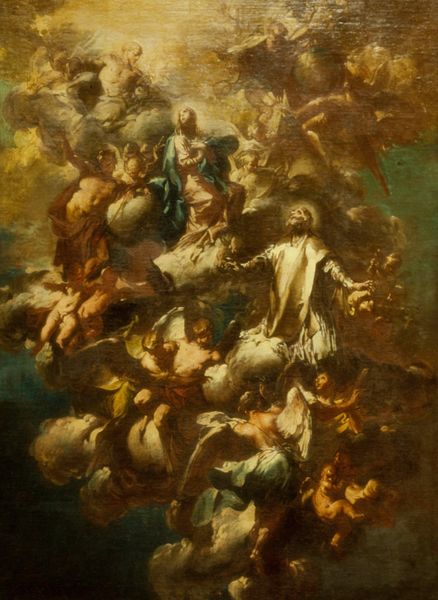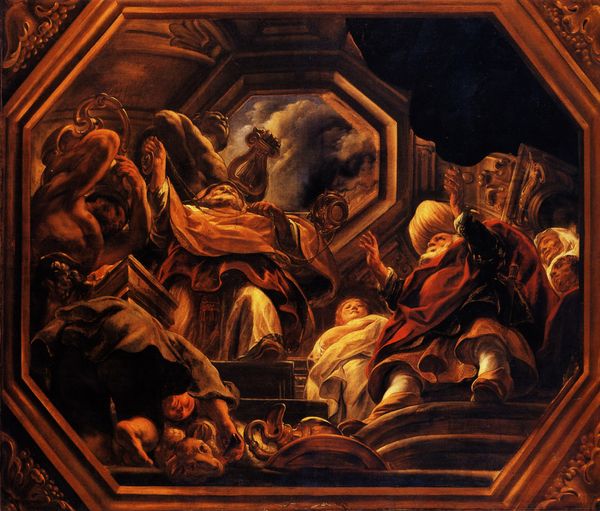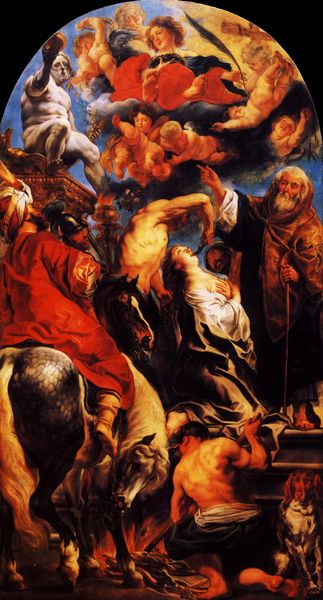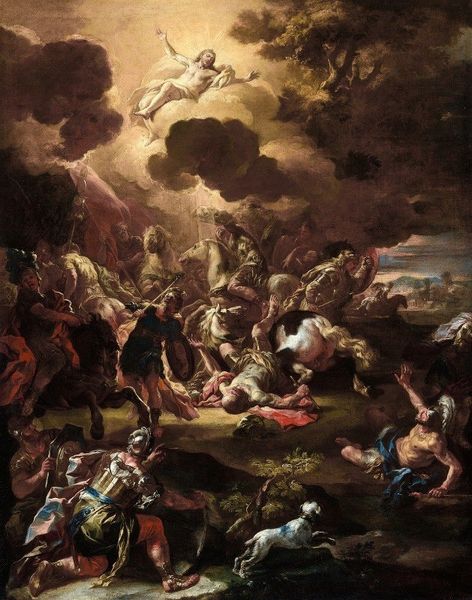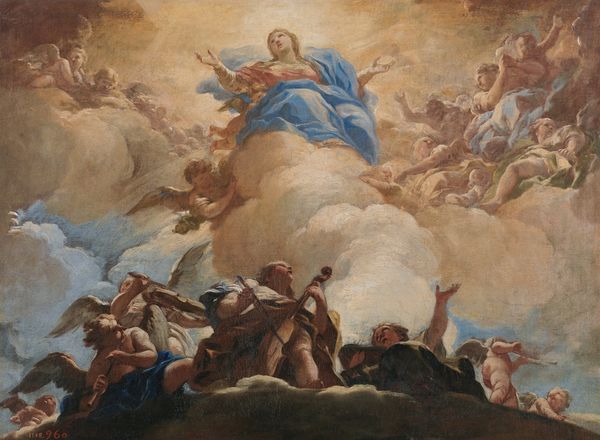
painting, oil-paint
#
allegory
#
baroque
#
painting
#
oil-paint
#
figuration
#
oil painting
#
roman-mythology
#
mythology
Dimensions: 225.5 x 266 cm
Copyright: Public domain
Curator: Let’s turn our attention now to “Psyche hosted on Olympus,” a captivating oil painting created by Jacob Jordaens in 1652. It is currently held in a Private Collection. Editor: It's a dizzying piece, isn't it? A swirling vortex of figures pulling my eyes toward that bright, hazy center. Is it meant to evoke a sense of euphoria, or something else? Curator: The composition is remarkable. The arrangement, the strong diagonals—it all emphasizes a clear visual hierarchy and the emotional crescendo building towards the heart of the canvas, doesn't it? Note the application of oil paints: the dramatic interplay of light and shadow creates an incredibly dynamic texture. Editor: But whose euphoria are we experiencing, precisely? In Roman mythology, Psyche undergoes immense trials—humiliation, isolation. I wonder how Jordaens understood her story and her arrival amongst the gods. Was she truly welcomed as an equal, or was this merely a performative inclusion in the patriarchal stronghold of Olympus? Curator: Mythology was fertile ground for Baroque artists, and Jordaens' treatment, through the rich color palette and energetic brushwork, highlights a sensuous grandeur fitting for gods and goddesses. See how each figure is rendered with attention to musculature and dramatic foreshortening! Editor: Exactly. That robust depiction hints at the body politics inherent in these mythologies. The gods are perpetually youthful, powerful, and, implicitly, maintain the order of the cosmos, and society itself. How do we view these power dynamics from a modern perspective, especially concerning a female figure finally being ‘granted’ acceptance? Is she truly free? Curator: Setting aside that reading for a moment, the symbolism also lends itself to pure formalism. The light emanating from the center could symbolize enlightenment, divinity, the final ascension of Psyche into a realm of eternal joy… Editor: And yet, for many contemporary viewers, myths such as these can evoke both awe and a degree of critical self-reflection about the stories we've been taught, the power structures they reinforce, and the figures who are either elevated or marginalized. Curator: It is certainly a painting that inspires much debate about both aesthetics and the context. Editor: Absolutely, making it an enduring reflection piece worth our contemplation, indeed.
Comments
No comments
Be the first to comment and join the conversation on the ultimate creative platform.
